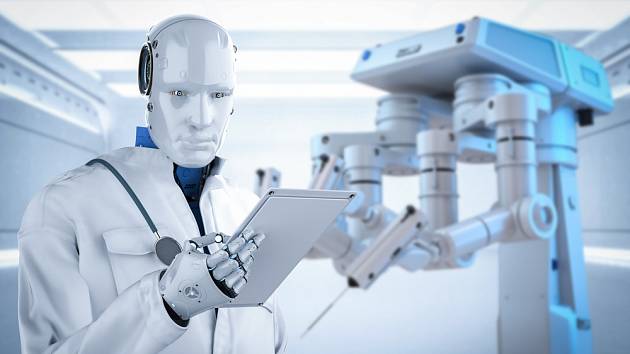Will robots heal us? Artificial intelligence promises miracles in healthcare as well
Without experienced doctors and nurses, even in the most daring visions of the future, when coexistence with artificial intelligence will probably become a common reality in medicine, we cannot do. Technologies will help more and more in healthcare. And in more than one case, he may even save a human life, even if it would have been unthinkable before.

Click to enlarge
In an equipped ambulance, the paramedic will be able to carry out the necessary procedures with the support of modern technology, which will be conducted remotely by an experienced surgeon from a hospital hundreds of kilometers away.
| Photo: Shutterstock
Imagine you are in a situation where time is of the essence after a serious crash. You may have witnessed the typical and not uncommon scene where a battered car that has gone off the road at speed lands on the nearest possible straight helicopter with rescuers. They load the lifeless body and take off to try to save the life hanging in the balance by transporting it to the hospital as quickly as possible. Today, it is the best that medical personnel can do for the injured.
Operation right on the road
However, transportation takes away important minutes in which decisions are made. In the near future, it may become a reality that a surgeon will operate on an injured person right next to the highway or under the ski slope where the accident occurs. Can you imagine such a thing? Vote at the end of the article.
Robots: Surgeons of the Future?
In an ambulance equipped with the necessary equipment, a paramedic with the support of modern technology will be able to carry out the necessary interventions, which will be conducted remotely by an experienced surgeon, for example from a university hospital hundreds of kilometers away.
Ambulance with 5G connection
This is not an exaggerated futuristic scenario, as it might seem. High speed 5G connection it already allows such equipment to operate, as reported by the Huawei blog. For example, as part of a project in Birmingham, UK, they are already testing an experimental ambulance connected to the 5G network. It is equipped, among other things, with virtual reality glasses and haptic gloves, with which the paramedic can feel the injured areas, while the surgeon in the hospital sees and feels the same.
Transmission interruption at best?
We can do something similar wonderful things in medicine to enjoy soon with us too? “We’re keeping a close eye on these technologies, but so far remote operations are only being done in an experimental environment for a number of reasons. Starting with technical imperfection, through the necessary readiness to solve possible complications, because we are working with a living organism with all its possible anomalies and unexpected reactions.
The risk of transmission interruption “at best” can also be a problem. It is also not possible to do without new amendments to the laws. And not to mention the price of such a system, while every ambulance would have to be equipped with it,” comments Jana Poštová, spokesperson for the Medical Operations Center, which centrally manages the operation of the emergency medical service.
Artificial intelligence in the role of diagnostics
Artificial Intelligence over time, it will significantly affect the way medical practices are operated. Although the treatment of various types of cancer has progressed greatly, early diagnosis still determines whether the patient can be saved or even cured.
Robotic surgery center in Ústí nad Labem:
However, evaluating the images obtained during screening is quite time-consuming and requires a lot of experience. Here, too, artificial intelligence can help, which first learns to recognize warning signs. This is done by evaluating tens of thousands of samples under the supervision of experts who manage the learning process.
Cancer detection 90% faster
Huawei’s cervical cancer screening project, reported by the website 5gvcesku.cz, showed that the system with the support of artificial intelligence can detect cancer 90% faster than a human! In addition, he does not get tired and does not make mistakes due to inattention.
In the end, of course, the doctor still makes the decision – artificial intelligence only helps him recognize the cases to which he should pay attention.
Flawless diagnosis from images
A similar example can be found in the Czech Republic. “Artificial intelligence is capable of providing doctors with a kind of third eye, helping them evaluate a large number of images with maximum accuracy. Our company is developing systems that prompt radiologistswhat is in the images and what kind of find is involved, says Matěj Misař from the Carebot company.
Demonstration that robotic surgery can perform very precise movements:
The system learned from hundreds of thousands of real images that several doctors had to see and agree on individual findings. The user uses the system in a browser that he knows well and through which he looks at images by default. Both the patient and the doctor can be sure that the diagnosis will always be correct. At the moment, the company is completing the certification of this medical device, and already in the middle of the year it will be able to help detect findings on chest images. By the end of this year, he expects the certification of another solution, this time for mammography.
Fantastic discounts of up to 90 percent. Shop conveniently and save. You can find discount coupons HERE.






